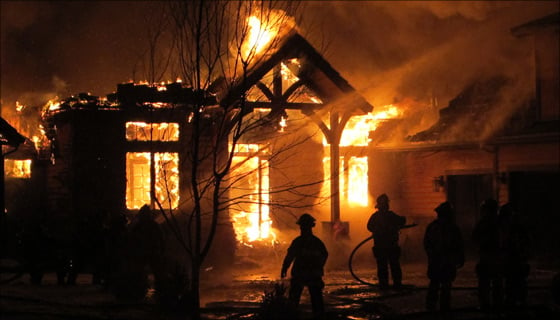
A few weeks ago, California Governor Gavin Newsom issued an executive order aimed at strengthening the viability of the state’s insurance market. Immediately following, California Department of Insurance Commissioner Ricardo Lara announced more specifics in a press conference and press release.
For those of us in the insurance industry and familiar with the situation, this was welcome news. California, the largest insurance market in the nation, has been grappling with the impacts of climate change, natural catastrophes, and extreme weather events at a time when insurers are experiencing record losses and rising risks.
These risks are exacerbated by population shifts, housing growth, and development in the areas most prone to extreme weather and natural catastrophes. At the heart of the problem is the state’s wildfire risk and growth in those wildfire-prone areas. With an average of 8,273 wildfires per year, California is among the most at risk for wildfires, according to data from HazardHub. Over the past decade, the state has seen an average of 933,000 acres burned yearly by wildfires.
A sustainable insurance market requires insurers to have sufficient coverage capacity and savings from premiums to withstand catastrophic events. Insurers regularly face the risk of not collecting enough premium surplus before a catastrophic event occurs, which could result in their insolvency. They, of course, mitigate this risk by purchasing reinsurance.
Almost every state allows insurers to consider reinsurance as an expense, to some degree or another, and thus include that cost in setting the price of a homeowner’s policy. However, historically, in California, reinsurance has not been an allowable expense. The problem is that the cost of reinsurance now exceeds the allowable profit margins for most carriers, leading some to pull back from the market.
The dozen largest insurers in California account for 85% of the insurance coverage in the state – and seven of them have left the state or announced limits on issuing new policies over the past year.
Despite its challenges, the state of California is highly insurable. HazardHub data shows that more than 90% of the properties damaged in California are concentrated in just 10% of the state, which rates as an F for wildfire risk. So, the vast majority of the state is highly insurable – and even in the 10% of the state deemed the highest risk, there are plenty of insurable properties.
With the right regulatory structure and the right data and risk analytics, and by examining risk at the property level, insurers can more accurately identify, price, and account for risk – and reestablish a sustainable insurance marketplace.
This is why we applaud the recent actions of California Governor Gavin Newsom and Insurance Commissioner Ricardo Lara in their efforts to adapt regulations to create a more viable insurance market.
Last week, the Governor and the California Department of Insurance announced their intent to allow insurers to incorporate the cost of reinsurance into their rate calculations --- eliminating one significant and rising risk for insurers.
The proposal also permits insurers to assess catastrophe risk using forward-looking projections supplied by risk models. This progressive approach recognizes that the current reliance on historical data is becoming increasingly outdated, given emerging and changing risks such as climate change and urban expansion into wildfire-risk areas.
Allowing insurers to price catastrophe risk using forward-looking projections will be a game changer in improving market conditions.
In exchange for these reforms, the state will require insurers participating in the market to take on customers in the high-risk wildfire areas of the state proportional to their market share.
Insurers need to prepare for these potential regulatory changes. In particular, they need to be ready with the technology required to identify the most insurable properties in these state-defined high-risk areas. There will be a land rush for the best customers in high-risk areas. The insurers who are prepared ahead of time will be in quite an advantageous position competitively.
The traditional insurance risk assessment tools which are in place in most of the industry struggle to accurately identify and differentiate risk in wildfire-prone areas. Many insurers rely on technologies that look at wildfire risks based on just a few data elements – and bundle all the properties in large geographical areas and rate them as having the same risk. Some of these geographical areas or zones can include entire cities, zip codes, or other census-defined areas.
Yet, the technology and robust data exist to examine over thirty data elements correlated with higher wildfire risk – and to map and define that risk at the exact property address level.
We are confident that HazardHub can provide insurers with this comprehensive data and empower them to assess and underwrite property risk more profitably in the state – as well as elsewhere in the U.S.
I’ll post again later this week with more details about how insurers can get ahead of the curve with their technology – and gain a competitive edge in the market.